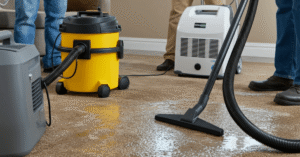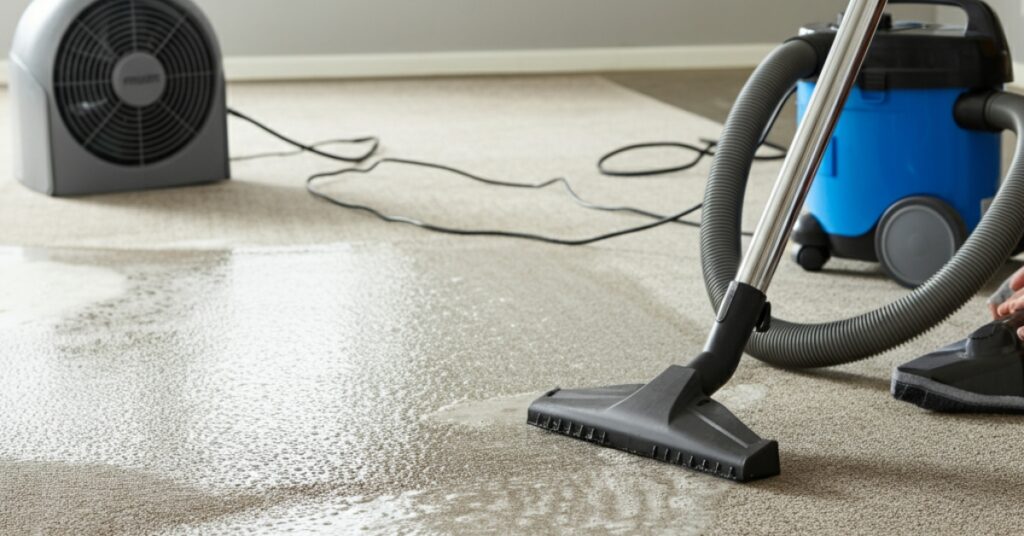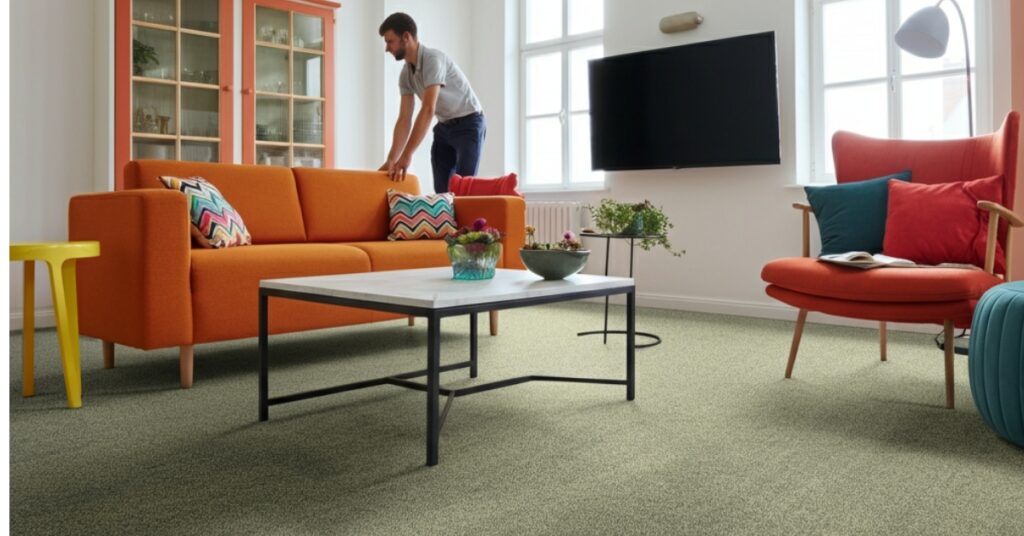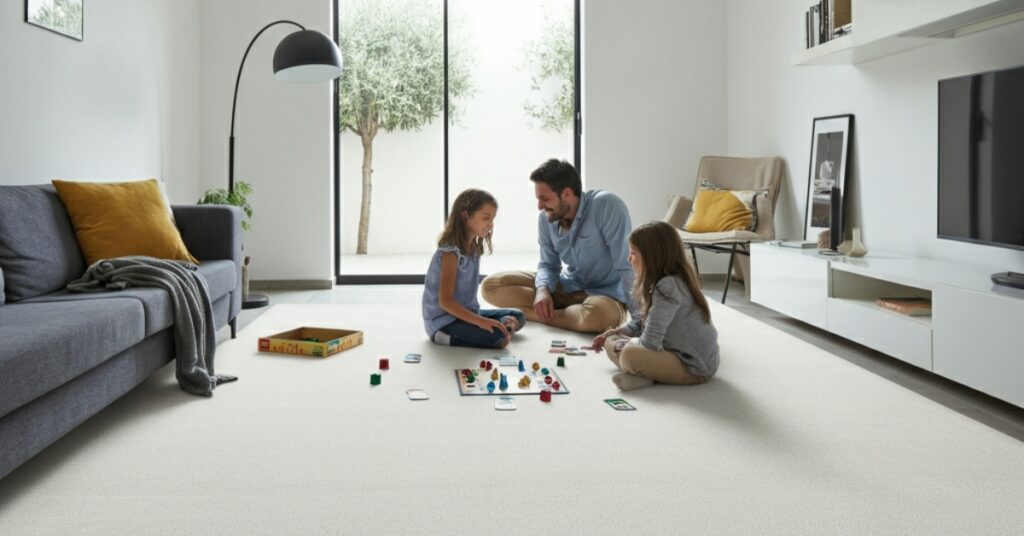As an Amazon Associate, I earn from qualifying purchases.
Finding mold and mildew on carpet can be a homeowner’s nightmare. It’s not just an unsightly stain; it raises immediate concerns about health risks and potential damage to your home. This unwanted fungal growth can appear after a simple spill, a leak, or in areas with high humidity. Understanding what causes it and how to properly address it is essential for maintaining a healthy living environment.
Successfully removing mold from your carpet involves identifying the source of the moisture, cleaning the affected area thoroughly, and taking steps to prevent it from returning. With the right approach and supplies, you can tackle this problem effectively. This article provides a comprehensive guide on how to identify, clean, and prevent mold and mildew on your carpet, ensuring your home remains safe and clean.
Understanding Mold and Mildew on Your Carpet
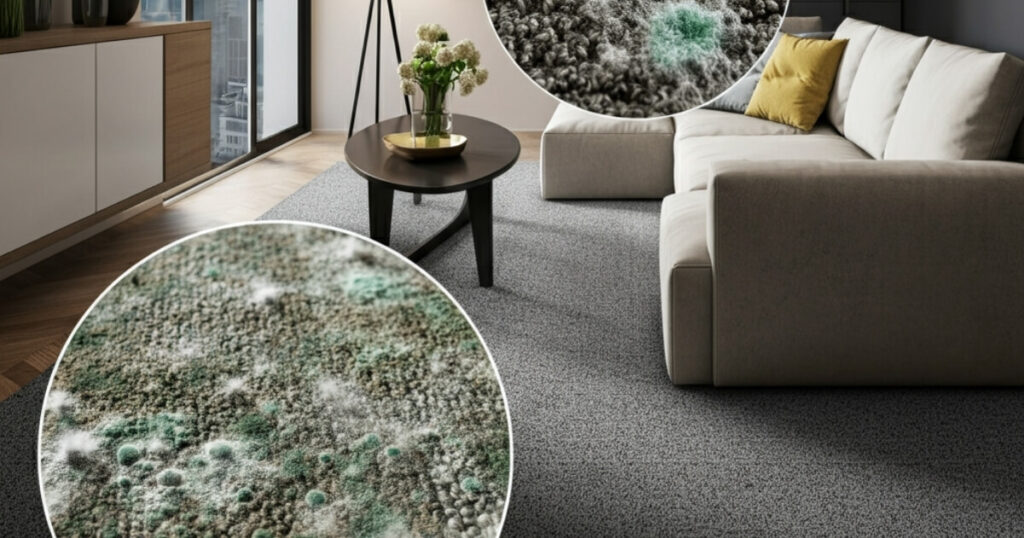
Before you can treat it, you need to know what you’re dealing with. Mold and mildew are both types of fungi that thrive in damp, warm environments with poor air circulation. While often used interchangeably, they have distinct differences. Mildew is a surface fungus that usually appears as a patch of gray or white and has a powdery texture. It’s typically less invasive than mold.
Mold, on the other hand, can be green, black, or even orange and often has a fuzzy or slimy appearance. It penetrates deeper into materials, causing more significant damage and posing greater health risks. Both can produce a distinct musty odor. Carpets offer an ideal breeding ground for these fungi because the fibers can trap moisture, dust, and organic debris, providing the perfect food source for spores to grow.
Common Causes of Mold and Mildew on Carpet
Understanding the root cause is the first step toward effective prevention. Mold and mildew on carpet almost always start with excess moisture. When carpet fibers become damp and aren’t allowed to dry completely, fungal spores that are naturally present in the air can settle and begin to grow.
Key sources of moisture include plumbing leaks, roof leaks, spills that aren’t cleaned up quickly, and high indoor humidity levels, often found in basements or poorly ventilated rooms. Even something as simple as tracking in water on your shoes can provide enough moisture for mold to start growing if the area doesn’t dry out. Identifying and controlling these moisture sources is critical to preventing fungal growth.
Identifying Mold Growth on Your Carpet
Early detection can make the removal process much easier. One of the first signs of mold or mildew on your carpet is a persistent musty smell that doesn’t go away, even after vacuuming. Visually, you might see discolored patches on the carpet surface. These spots can be white, gray, black, green, or yellow.
In some cases, the growth may not be visible on the surface, especially if it’s occurring on the carpet padding or subfloor underneath. If you suspect mold but can’t see it, check for damp spots, and consider lifting a corner of the carpet in an inconspicuous area to inspect the backing and padding. Any discoloration or dampness underneath is a strong indicator of a mold problem.
Health Risks Associated with Carpet Mold
Exposure to mold and mildew on carpet can lead to a variety of health issues, particularly for individuals with allergies, asthma, or compromised immune systems. Mold spores are easily inhaled and can trigger allergic reactions, including sneezing, runny nose, red eyes, and skin rashes.
For those with asthma, mold exposure can lead to more frequent and severe attacks. In more serious cases, prolonged exposure to certain types of mold, like black mold (Stachybotrys chartarum), can cause more severe health problems, such as respiratory infections, headaches, and fatigue. Because of these risks, it’s important to address any mold growth in your home as quickly as possible.
How to Remove Mold and Mildew from Carpet
If you’ve discovered mold on your carpet, you’ll need to act fast to remove it. For small areas (less than 10 square feet), you can often handle the cleaning yourself. However, for larger infestations, it’s safer to call a professional mold remediation service.
Step 1: Prepare for Safe Cleaning
Safety should be your top priority when dealing with mold. Before you begin, protect yourself by wearing an N-95 respirator mask, safety goggles, and rubber gloves to avoid inhaling spores or getting them on your skin. Open windows and use fans to ventilate the area, but be careful not to point fans directly at the moldy patch, as this can spread spores to other parts of the room.
If possible, try to isolate the room by closing doors or using plastic sheeting to cover doorways. This helps contain the airborne spores during the cleaning process. Having your safety gear and ventilation in place before you start disturbing the mold is crucial for a safe removal process.
Step 2: Dry the Affected Carpet Area
Mold cannot grow without moisture, so the first crucial step is to thoroughly dry the carpet. If the area is wet from a recent spill or leak, use a wet/dry vacuum to extract as much water as possible. For damp carpets, sprinkle a generous amount of baking soda or cat litter over the area to absorb the remaining moisture.
Let the absorbent material sit for several hours, or even overnight, before vacuuming it up completely. You can also use fans and a dehumidifier to speed up the drying process. Ensure the carpet, padding, and subfloor are completely dry before moving on to the next step, as any lingering moisture will allow the mold to return.
Step 3: Treat the Mold and Mildew
Once the carpet is dry, it’s time to treat the mold. There are several cleaning solutions you can use. A mixture of equal parts white vinegar and water is a popular and effective natural option. Vinegar can kill many common species of mold and mildew.
Pour the solution into a spray bottle and lightly mist the affected area. Be careful not to oversaturate the carpet. Let the solution sit for about an hour to allow the vinegar to penetrate and kill the fungus. For tougher stains, you can also use a solution of dish soap and water or a commercially available carpet mold remover—just be sure to follow the product’s instructions carefully.
Step 4: Scrub and Rinse the Area
After letting the cleaning solution sit, use a stiff-bristled brush to scrub the moldy area. Work in gentle, circular motions to lift the mold from the carpet fibers. This action helps to break up the mold colony and remove the visible stains.
Once you’ve thoroughly scrubbed the spot, it’s important to rinse the area to remove the cleaning solution and any remaining mold residue. Dampen a clean cloth with water and blot the area repeatedly. Avoid pouring water directly onto the carpet. After rinsing, blot the spot with dry towels to absorb as much moisture as possible.
Step 5: Final Drying and Vacuuming
The final step is to ensure the carpet is completely dry once again. Use a wet/dry vacuum to extract any remaining moisture, and then aim fans at the area or use a dehumidifier to finish the job. This drying step is critical; any leftover dampness can lead to regrowth.
Once the carpet is bone-dry, vacuum the entire area thoroughly to pick up any lingering spores and residue. It’s a good idea to use a vacuum with a HEPA filter, as this will trap the microscopic mold spores instead of releasing them back into the air. Dispose of the vacuum bag immediately after cleaning.
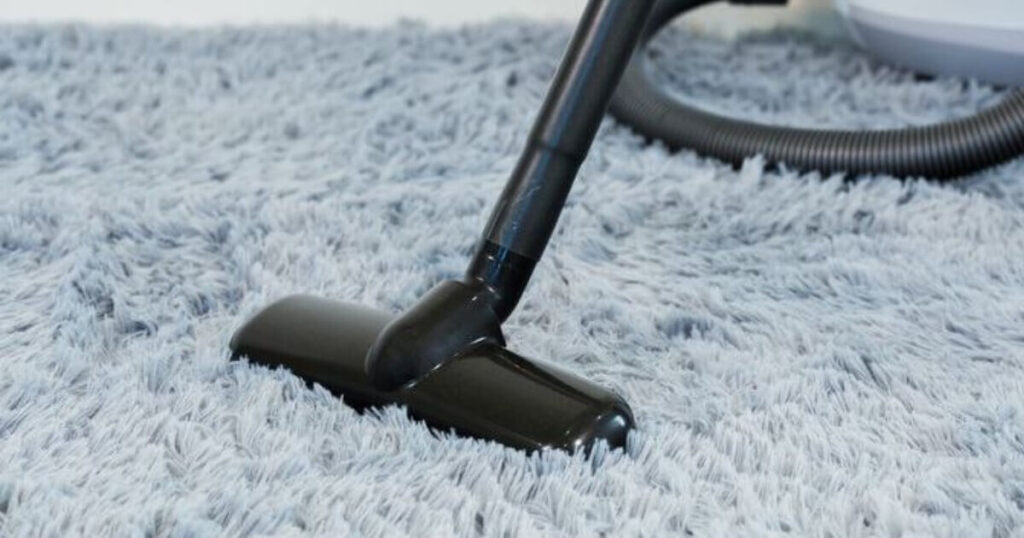
When to Call a Professional
While many small mold issues can be handled with DIY methods, there are situations where calling a professional is the best and safest choice. If the mold covers an area larger than 10 square feet, it is considered a large infestation and should be handled by experts.
Additionally, if the mold growth is a result of sewage backup or contaminated water, it poses serious health risks and requires professional remediation. If you or anyone in your household has a compromised immune system or severe respiratory issues, it’s also wise to leave the job to professionals. They have the specialized equipment and training to safely and completely remove the mold.
Frequently Asked Questions
1. Can I use bleach to kill mold on my carpet?
No, it is generally not recommended to use bleach on carpets. Bleach can discolor or damage carpet fibers and may not be effective at killing mold that has penetrated deep into the carpet padding. The Environmental Protection Agency (EPA) advises against using bleach on porous materials like carpet for mold removal.
2. What does mold on carpet smell like?
Mold on carpet typically produces a distinct musty, earthy odor. The smell is often persistent and can become stronger over time, especially in damp or poorly ventilated areas. If you notice a “dank” or “dirty socks” smell that doesn’t go away, it could be a sign of hidden mold.
3. Is it possible for mold to grow under the carpet?
Yes, it is very common for mold to grow on the carpet padding and subfloor underneath the carpet. This often happens after a flood or significant leak. If you suspect mold but don’t see it on the surface, you may need to lift a corner of the carpet to inspect the layers beneath.
4. How quickly can mold grow on a wet carpet?
Mold can begin to grow on a wet carpet in as little as 24 to 48 hours, especially if the conditions are right (warmth and humidity). This is why it’s crucial to dry any wet spots on your carpet as quickly as possible.
5. Does vacuuming get rid of mold spores?
Vacuuming can help remove loose mold spores from the carpet surface, but it won’t kill or remove the mold colony itself. If you are cleaning a moldy area, using a vacuum with a HEPA filter is recommended to trap the spores and prevent them from spreading. Regular vacuuming is a good preventative measure to remove dust and debris that can feed mold growth.
Protecting Your Carpet for the Future
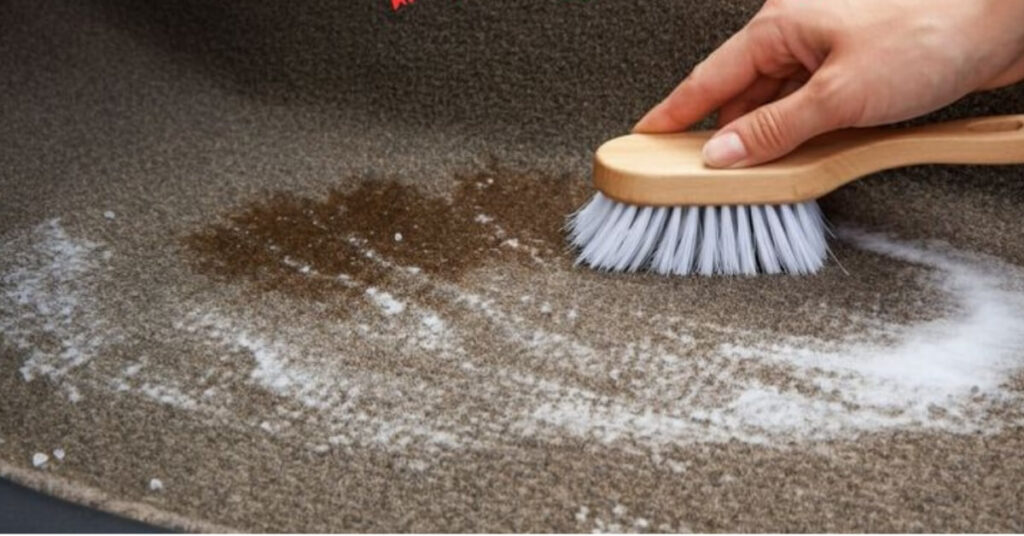
Preventing future mold and mildew growth is all about controlling moisture. Regularly inspect your home for leaks in the roof, plumbing, and windows, and make repairs promptly. Use a dehumidifier in damp areas like basements to keep indoor humidity levels between 30-50%.
Ensure good air circulation throughout your home by using exhaust fans in kitchens and bathrooms. Clean up spills on your carpet immediately and dry the area thoroughly. Regularly vacuuming your carpets can also help by removing the dirt and organic matter that mold feeds on. By staying vigilant, you can keep your carpets clean and free from mold.
As an Amazon Associate, I earn from qualifying purchases.

